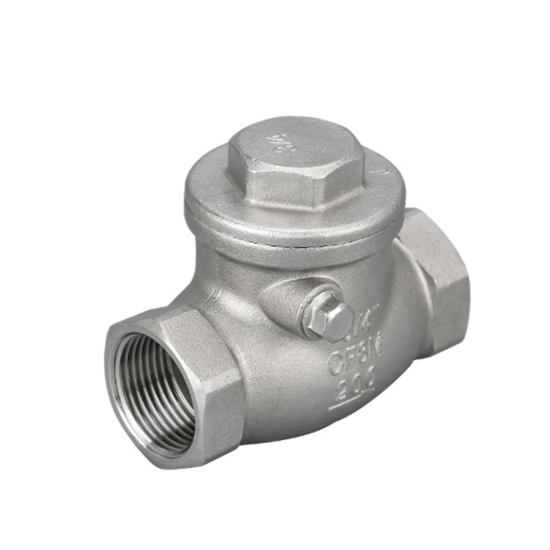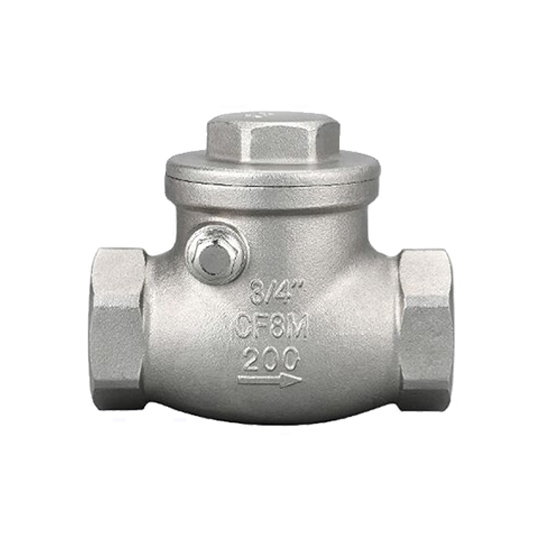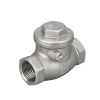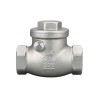



- Stock: In Stock
- Model: RDDLZ-SSSCV-04
- Weight: 1.00
- SKU: RDDLZ-SSSCV-04
Available Options
Note: This check valve cannot be used for drinking water.
Buy a 4 inch swing check valve from RDDLZ.com to regulate and control the flow of fluid through your pipes. 304/316 stainless steel horizontal check valve, DN100, 200 WOG, can withstand high temperature and high pressure, used for the piping system to prevent backflow of water, oil and gas.
Specifications
- Model: RDDLZ-H14W
- Check Valve Type: Swing
- Shape: Horizontal
- Nominal Diameter: 4 inch (100mm)
- Working Pressure: 200 WOG
- Product Material: 304/316 Stainless Steel
- Connection Form: Thread
- Thread Standard: BSP, BSPT, NPT
- Temperature Range: -20°C~300°C
- Weight: 8.12kg
- Applicable Medium: Water, Oil, Gas, Nitric Acid, Acetic Acid
Details
| Main Part Materials | |||
| NO. | Part Name | Materials | QTY |
| 1 | BODY | CF8/CF8M | 1 |
| 2 | DISC | CF8/CF8M | 1 |
| 3 | HANGGER PIN | SS304/SS316 | 1 |
| 4 | JOINT GASKET | PTRE/RPTFE | 1 |
| 5 | CAP | CF8/CF8M | 1 |
| Dimension (Unit: mm) | |||
| DN | D | L±1.5 | H |
| 100 | 96 | 237 | 136 |
Applications
A stainless steel swing check valve is a type of valve used to regulate the flow of fluids or gases in a pipeline. It is commonly used in applications where backflow prevention is necessary, such as in wastewater treatment plants, oil and gas refineries, and chemical processing facilities.
Tips: How to maintain a stainless steel swing check valve?
To maintain a stainless steel swing check valve and ensure its longevity, it is important to perform regular maintenance and cleaning. Here are some steps to maintain a stainless steel swing check valve:
- Inspection: Inspect the valve periodically for any signs of damage, wear or corrosion. Look for leaks, cracks,
or any other issues that may impact the valve's performance. - Cleaning: Clean the valve regularly with a non-abrasive cleaner to remove any buildup or debris that may impact the valve's function. Use a soft cloth or brush to clean the valve, taking care not to damage the valve or its components.
- Lubrication: Apply a lubricant to the valve's moving parts to ensure smooth operation. Use a lubricant that is compatible with stainless steel and that is recommended by the manufacturer.
- Tightening: Check the bolts and nuts periodically to ensure they are properly tightened. Over time, they may loosen due to vibration, temperature changes or other factors, which can impact the valve's function.
- Replacement: If the valve shows signs of damage or wear that cannot be repaired, it may need to be replaced. Consult the manufacturer's instructions for information on replacing the valve or its components.
